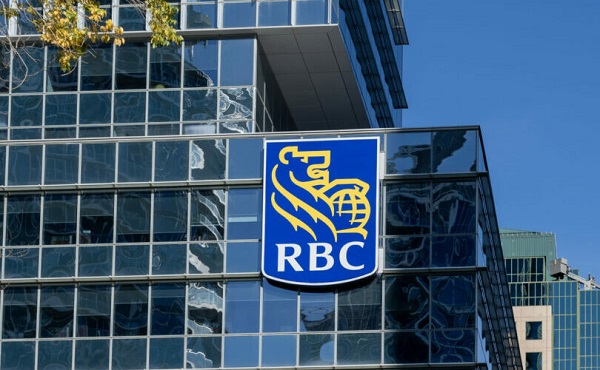Business
City of Red Deer expedites patio process for desperate restaurants

From the City of Red Deer
City accommodates demand for patios
Summer patios are popping up throughout Red Deer as an extension to seating areas at local restaurants. Following the mandated closure of indoor dining by the Government of Alberta, outdoor patios are one way food and beverage businesses can continue to operate.
“We know local business owners are struggling to adapt to changing restrictions and wanted to find a way to expedite the application process so these businesses see minimal impact to their operations as a result of closure of indoor dining,” said Erin Stuart, Inspections and Licensing Manager. “The health and safety of Red Deerians is of utmost importance, and participating businesses must ensure that public health orders and provincial restrictions continue to be followed.”
Patios installed on private property require a development permit and may require a building permit. In an effort to offer immediate assistance to businesses, The City is modifying these processes to allow for installation of patios prior to permits being issued, following discussions with the Red Deer Chamber of Commerce.
A signed waiver is required by the business owner, allowing for the immediate installation of the patio. The business owner will be responsible for submitting a complete application, including a site plan outlining the location and measurements of the patio and the number of seats, within two weeks of the signed waiver being submitted. The permit will continue to be processed, ensuring safety and legislative requirements are met, and will be valid until September 30, 2021.
For patios within the downtown core, business owners are required to apply for a Seasonal Downtown Patio. Businesses within the downtown core require a boardwalk to be installed around the perimeter of the patio to provide a safe, accessible walkway for pedestrians (this excludes businesses located within Ross Street Patio). The City will build, install, remove and store these boardwalks at no cost to participating businesses.
Interested business owners can visit www.reddeer.ca/seasonalpatios for more information and to begin the application process.
Business
Top Canadian bank ditches UN-backed ‘net zero’ climate goals it helped create

From LifeSiteNews
RBC’s dropping of its ‘net zero’ finance targets came just one day after the Liberal Party under Mark Carney was re-elected in Canada.
Just one day after the re-election of the Liberal Party under Mark Carney, the Royal Bank of Canada joined the growing list of top banks withdrawing from a United Nations-backed “net zero” alliance that supports the eventual elimination of the nation’s oil and gas industry in the name of “climate change.”
The Royal Bank of Canada (RBC) on Tuesday quietly dumped its UN-backed Net-Zero Banking Alliance (NZBA) sustainable finance targets, which called for banks to come in line with the push for net-zero carbon emissions by 2050. The NZBA is a subgroup of the Glasgow Financial Alliance for Net Zero (GFANZ), which Carney was co-chair of until recently.
RBC’s departure comes despite the fact that it was one of the NZBA’s founding members.
RBC joins Toronto-Dominion Bank (TD), Bank of Montreal (BMO), National Bank of Canada, and the Canadian Imperial Bank of Commerce (CIBC) who earlier in the year said they were withdrawing from the NZBA.
The bank announced the move away from a green agenda in its 2024 sustainability report, noting it would no longer look to pursue a $500 billion sustainable finance goal. It cited changes to Canada’s federal Competition Act as the reason.
The changes to the act, known as the “greenwashing law,” now mandate that companies provide proof of their environmental claims.
“We have reviewed our methodology and have concluded that it may not have appropriately measured certain of our sustainable finance activities,” noted RBC in its report.
RBC also noted it would not make public any of its metrics regarding its energy supply ratio.
Monday’s election saw Liberal leader Carney beat out Conservative rival Poilievre, who also lost his seat. The Conservatives managed to pick up over 20 new seats, however, and Poilievre has vowed to stay on as party leader, for now.
Carney worked as the former governor of the Bank of Canada and Bank of England and spent many years promoting green financial agendas.
The GFANZ was formed in 2021 while Carney was its co-chair. He resigned from his role in the alliance right before he announced he would run for Liberal leadership to replace former Prime Minister Justin Trudeau.
Large U.S. banks such as Morgan Stanley, JPMorgan Chase & Co, Wells Fargo and Bank of America have all withdrawn from the group as well.
Since taking office in 2015, the Liberal government, first under Trudeau and now under Carney, has continued to push a radical environmental agenda in line with those promoted by the World Economic Forum’s “Great Reset” and the United Nations’ “Sustainable Development Goals.” Part of this push includes the promotion of so called net-zero energy by as early as 2035.
Business
Overregulation is choking Canadian businesses, says the MEI

 From the Montreal Economic Institute
From the Montreal Economic Institute
The federal government’s growing regulatory burden on businesses is holding Canada back and must be urgently reviewed, argues a new publication from the MEI released this morning.
“Regulation creep is a real thing, and Ottawa has been fuelling it for decades,” says Krystle Wittevrongel, director of research at the MEI and coauthor of the Viewpoint. “Regulations are passed but rarely reviewed, making it burdensome to run a business, or even too costly to get started.”
Between 2006 and 2021, the number of federal regulatory requirements in Canada rose by 37 per cent, from 234,200 to 320,900. This is estimated to have reduced real GDP growth by 1.7 percentage points, employment growth by 1.3 percentage points, and labour productivity by 0.4 percentage points, according to recent Statistics Canada data.
Small businesses are disproportionately impacted by the proliferation of new regulations.
In 2024, firms with fewer than five employees pay over $10,200 per employee in regulatory and red tape compliance costs, compared to roughly $1,400 per employee for businesses with 100 or more employees, according to data from the Canadian Federation of Independent Business.
Overall, Canadian businesses spend 768 million hours a year on compliance, which is equivalent to almost 394,000 full-time jobs. The costs to the economy in 2024 alone were over $51.5 billion.
It is hardly surprising in this context that entrepreneurship in Canada is on the decline. In the year 2000, 3 out of every 1,000 Canadians started a business. By 2022, that rate had fallen to just 1.3, representing a nearly 57 per cent drop since 2000.
The impact of regulation in particular is real: had Ottawa maintained the number of regulations at 2006 levels, Canada would have seen about 10 per cent more business start-ups in 2021, according to Statistics Canada.
The MEI researcher proposes a practical way to reevaluate the necessity of these regulations, applying a model based on the Chrétien government’s 1995 Program Review.
In the 1990s, the federal government launched a review process aimed at reducing federal spending. Over the course of two years, it successfully eliminated $12 billion in federal spending, a reduction of 9.7 per cent, and restored fiscal balance.
A similar approach applied to regulations could help identify rules that are outdated, duplicative, or unjustified.
The publication outlines six key questions to evaluate existing or proposed regulations:
- What is the purpose of the regulation?
- Does it serve the public interest?
- What is the role of the federal government and is its intervention necessary?
- What is the expected economic cost of the regulation?
- Is there a less costly or intrusive way to solve the problem the regulation seeks to address?
- Is there a net benefit?
According to OECD projections, Canada is expected to experience the lowest GDP per capita growth among advanced economies through 2060.
“Canada has just lived through a decade marked by weak growth, stagnant wages, and declining prosperity,” says Ms. Wittevrongel. “If policymakers are serious about reversing this trend, they must start by asking whether existing regulations are doing more harm than good.”
The MEI Viewpoint is available here.
* * *
The MEI is an independent public policy think tank with offices in Montreal, Ottawa, and Calgary. Through its publications, media appearances, and advisory services to policymakers, the MEI stimulates public policy debate and reforms based on sound economics and entrepreneurship.
-

 Agriculture2 days ago
Agriculture2 days agoLiberal win puts Canada’s farmers and food supply at risk
-

 Alberta2 days ago
Alberta2 days agoAlberta’s future in Canada depends on Carney’s greatest fear: Trump or Climate Change
-

 Alberta2 days ago
Alberta2 days agoIt’s On! Alberta Challenging Liberals Unconstitutional and Destructive Net-Zero Legislation
-

 Frontier Centre for Public Policy2 days ago
Frontier Centre for Public Policy2 days agoTrust but verify: Why COVID-19 And Kamloops Claims Demand Scientific Scrutiny
-

 International2 days ago
International2 days agoNigeria, 3 other African countries are deadliest for Christians: report
-

 Business23 hours ago
Business23 hours agoCanada urgently needs a watchdog for government waste
-

 Business1 day ago
Business1 day agoTrump says he expects ‘great relationship’ with Carney, who ‘hated’ him less than Poilievre
-

 2025 Federal Election23 hours ago
2025 Federal Election23 hours agoThe Liberals torched their own agenda just to cling to power





